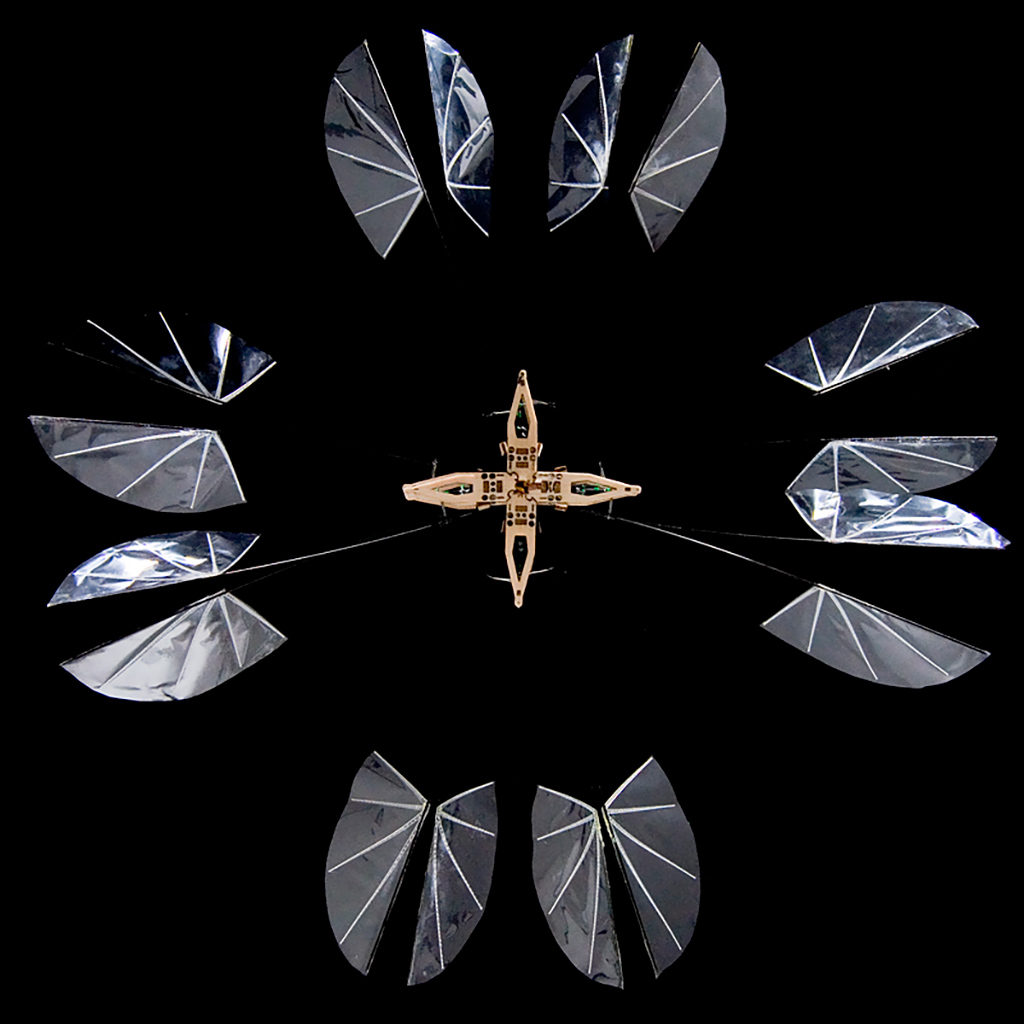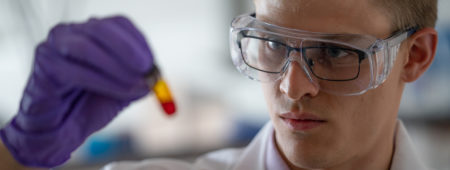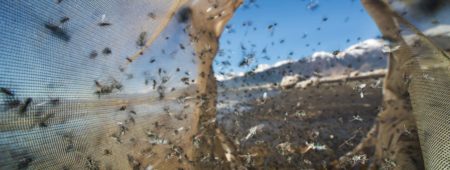
Detecting Gas Leaks with Robot Insects

In five to 10 years, insect robots may be able track odors from gas and chemical leaks or sniff out biological weapons. Such technology might have prevented the silent, undetected chemical leak that killed thousands in Bhopal, India, in 1984, help reduce fugitive emissions from the oil and gas industry, or curtail future biological attacks.
Hertz Fellow Floris van Breugel is laying the groundwork with his research on the humble fruit fly’s superior ability to track odor even in windy conditions.
“At present, there are no reliable methods to hunt down dangerous leaks. The best we have is well-trained dogs that can indicate to their handlers what they smell and follow a given path,” he said. “Insects have emerged as a popular system because they fly and are exceptionally good at solving this problem despite having numerically simple brains.”
Fruit flies follow the odor of fermenting fruit to locate food and mates and to decide where to lay their eggs, said van Breugel, an assistant professor of mechanical engineering at the University of Nevada, Reno, and recipient of the 2020 Sloan Research Fellowship.
Once van Breugel understands how flies track odor plumes, he will work with others to build robotic systems that mimic this behavior. “I enjoy interdisciplinary work. We’ll need people with expertise in electrical engineering, mechanical engineering, biology, and neuroscience to create the robot drones able to detect odors at low concentration,” he said.
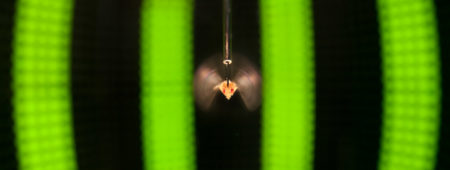
Understanding Odor Tracking
To understand how they track odor plumes, van Breugel puts fruit flies in a wind tunnel box measuring 24" x 24" x 40”. He flashes a red light that the genetically modified insects interpret as the odor of fermenting fruit, causing them to move toward the “smell.” Van Breugel then blasts them with wind currents and follows their movements using a 3-D real-time tracking system composed of eight to 16 cameras that overlap at different angles. This allows van Breugel to reconstruct where they are searching and predict where they might be going.
Typically, the fruit fly catches a whiff of an odor plume, exits the plume and then zigzags back and forth until it reencounters the odor plume. This strategy generally leads it closer to the odor source. Visual cues are necessary for the final stage of its search. One-third of the fly brain’s 100,000 neurons are used for processing visual information. By comparison, the human brain has 100 billion neurons.
“We think the flies have a sophisticated understanding of the wind and odor over time, and it seems very likely that they need some kind of memory from earlier in their flight,” van Breugel said. “The problem I’m most interested in studying is how the flies integrate different sources of sensory information. I want to understand where in the fly’s brain information processing is happening.”
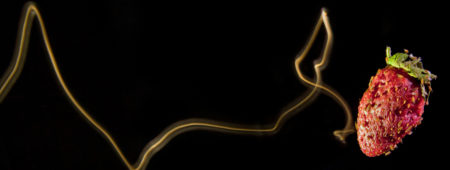
Creating Insects Robots
Van Breugel focused on insect flight biomechanics, control, and multi-sensory integration while pursuing his doctorate at the California Institute of Technology. In 2014, he completed his PhD in Control and Dynamical Systems with support from the Hertz Fellowship and the National Science Foundation.
“When I started my PhD, I got to do what I thought was interesting. The Hertz Fellowship let me forge my own path. I wouldn't be doing this work if I hadn't had the freedom to explore different avenues,” he said.
As a post-doc at the University of Washington, van Breugel studied insect search strategies and machine-learning approaches to system identification of complex systems. He worked with Jeff Riffell, assistant professor in the Department of Biology and J. Nathan Kutz, adjunct professor of electrical engineering and physics.
Other researchers have facilitated van Breugel’s research by mapping half of the adult fruit fly’s brain. “It’s very helpful to know what neurons are connected to other neurons,” he said, adding that it’s also very helpful to have such a cooperative model organism.
“A fruit fly is pretty happy in the lab,” Van Breugel said. “They’re small—only three millimeters long—and easy to rear in the lab.” Researchers can get big sample sizes, and the laboratory doesn’t change their behavior. There are a lot of genetic tools to use with fruit flies, he said, noting that the insects have a two- to three-week life cycle. Scientists have used fruit flies, also known as Drosophila melanogaster, to study genetics and behavior for more than a century.
Van Breugel admits there are challenges to developing a robot modeled on a fly. For example, the most common drones have rotors at four corners, and they produce a lot of air flow, which would disturb odor plumes. Drones with fixed wings also might not work because they are less maneuverable.
“We might need to create robots that are a little bit more like an insect,” he said, noting that the odor plume tracking research is still in its early stages.
By Jeannine Mjoseth
